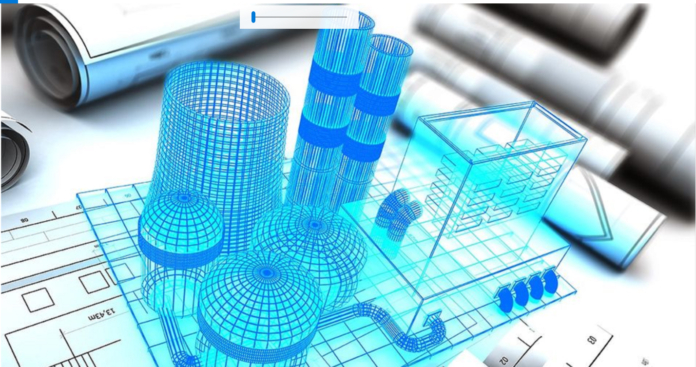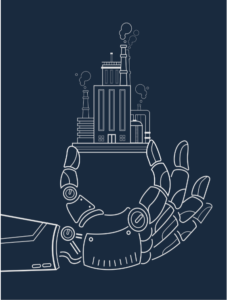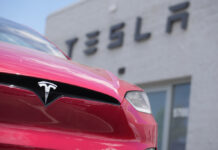
In the post-pandemic world, Industrial Artificial Intelligence (AI) will come of age as a driving force and enabler of innovative operational applications for capital-intensive industries. Fuelled by significant volatile market forces, this new normal will be anything but business as usual. Combined with shifts in new technologies, the transformational impact of Industrial AI is unprecedented. Companies need to adopt a business-first mentality and applying AI technology to domain-specific industrial challenges, by focusing on critical outcomes. With workforce shifts and a resulting loss of domain expertise, there is an increased adoption of AI and automation across these industries.
With the need to automate operational knowledge, there is a greater need for intelligence-rich applications. A lack of in-house data science skills continues to be a key barrier to AI adoption. Industrial businesses can mitigate this challenge with the convergence of AI, data science, purpose-build software, as well as domain expertise – to overcome skills shortage and deploy built-for-industry AI applications.
Benefitting from Industrial AI

Embedded AI applications enable users to carry out domain-specific operations with increased accuracy, quality, reliability, and sustainability across the industrial asset lifecycle. The biggest benefit of Industrial AI is a significant increase in productivity, as well as benefits in sustainability. The next-generation asset optimization solutions that have embedded AI can overcome resource barriers, which significantly reduces the need for organizations to recruit many data scientists and reap benefits. Efficiency and value capture are cornerstones in this economy. For example, with a relatively fragile supply chain, industrial companies cannot risk errors and machine failures slowing them down.
Predictive and prescriptive maintenance technology, with Machine Learning (ML) and Industrial AI, can identify precise failure patterns to predict equipment degradation weeks or even months in advance. This ensures that action can be taken to mitigate unplanned downtime, as well as safety and environmental risks. Companies are implementing specific process metrics that consider emissions and resource use, as well as efficiency enhancements through digital technology. The International Energy Agency (IEA) has found that Industrial AI and digital solutions can boost energy efficiency by up to 30% for industrial operations. Multi-dimensional optimization, predictive analytics, and other digital solutions also help in meeting sustainability goals.
Artificial Intelligence of Things
According to Maciej Kranz, a leading technologist, AI, and the Industrial Internet of Things (IIoT), these technologies become transformational when they integrate, interconnect and interwork – with intelligence – to solve complex industry problems. Collectively, they are like the body and brain of industrial digital transformation: IIoT is the body, creating and transmitting data from a variety sources that is sometimes acted upon, while AI is the brain, turning data into intelligence for smarter decisions and enabling the digital future of industrial organizations.
The confluence of these technological forces gives rise to a new digital solution category – the Artificial Intelligence of Things (AIoT) – that centres on unlocking the hidden business value in industrial data. This category describes the combination of AI technologies with the IIoT to enable the next generation of Industrial AI infrastructure, allowing organizations to achieve more efficient IIoT operations, enable seamless human-machine workflows, harmonize industrial data management, and rapidly transform raw data into tangible business outcomes.
According to Accenture, nearly 69% of executives acknowledge they know how to pilot a program but struggle to scale their Industrial AI strategy across the enterprise. Organization strategy needs to start with the identification of business problems, corporate objectives, and strategic goals. Companies need to democratize the application of AI by focusing on business outcomes, making the technology valuable and actionable to create real business value.
Scaling Towards an AIoT Strategy
 Sharp market volatility means capital-intensive industries have to be more agile in an unprecedented way to survive and thrive. Companies need to capitalize on the rapid convergence of IT and OT. The rise of the digital executive is reshaping the digital transformation strategy of industrial organizations. There is a critical and growing need to access industrial analytics and actionable insights in making business decisions across the enterprise. Organizations need to focus on strategic industrial data management, as well as using AI-enabled technologies to unlock the hidden value in these previously unoptimized and undiscovered sets of industrial data.
Sharp market volatility means capital-intensive industries have to be more agile in an unprecedented way to survive and thrive. Companies need to capitalize on the rapid convergence of IT and OT. The rise of the digital executive is reshaping the digital transformation strategy of industrial organizations. There is a critical and growing need to access industrial analytics and actionable insights in making business decisions across the enterprise. Organizations need to focus on strategic industrial data management, as well as using AI-enabled technologies to unlock the hidden value in these previously unoptimized and undiscovered sets of industrial data.
Industrial organizations are increasing investment in lowering barriers to AI adoption by deploying fit-for-purpose Industrial AI applications that combine data science and AI with software and domain expertise. This is key to overcoming a lack of in-house skills and drastically reduce the need for an army of data scientists. To scale, many enterprises are adopting new measures to reduce complexity in interoperability, overcome information silos and harmonize towards a cloud-ready infrastructure that bridges legacy systems with next-generation solutions.
A Business-First AIoT Ecosystem
In serving as the foundational infrastructure for industrial companies to evolve and accelerate towards the Self-Optimizing Plant, the Aspen AIoT also addresses organizational challenges today. First, the main challenge lies in data integration and mobility. Between 60 – 73% of enterprise data is not utilized and exacerbated by a lack of scalable data infrastructure to power Industrial AI models. Organizations need to access and fully leverage integrated data across the enterprise. A cloud-ready infrastructure is necessary to scale in AI with the right tools, infrastructure, and workflows to power Industrial AI across the solution lifecycle. This is a critical success factor for organizations to mature beyond sporadic AI proof-of-concepts to an enterprise-wide Industrial AI strategy.
Secondly, Deloitte’s recent article on the state of AI in the enterprise highlighted “modernizing our data infrastructure for AI” as the top reason for 20% of the companies surveyed to increase competitive advantage via AI. The AIoT Hub provides a cloud-ready, robust, and highly scalable infrastructure for Industrial AI applications to realize the vision for the Self-Optimizing Plant. Third, industrial organizations need to translate real-time data into faster, smarter, profitable business decisions. The AIoT Hub enables access to real-time data, analytics and enterprise-wide workflow and governance.
Finally, enterprises need a purpose-built, fully integrated AI environments for data scientists to collaborate with domain experts to accelerate the transformation of raw data into purposefully guided AI/ML products, driven by fit-for-industry algorithms and models. The AIoT Hub provides an embedded workbench for feature engineering, training, rapidly turning ML models into products, as well as supporting version upgrades and collaboration. Data scientists and domain experts, across customers and partners, are empowered to collaborate and build their own data-rich AI apps and models.
Indeed, 2021 looks set to be a year where Industrial AI goes mainstream – powered by a robust AIoT strategy. This bullish sentiment is further bolstered with a 2021 Artificial Intelligence Award from the Business Intelligence Group for the AIoT Hub’s ability to accelerate optimal ROI and drive industrial digital transformation.









































